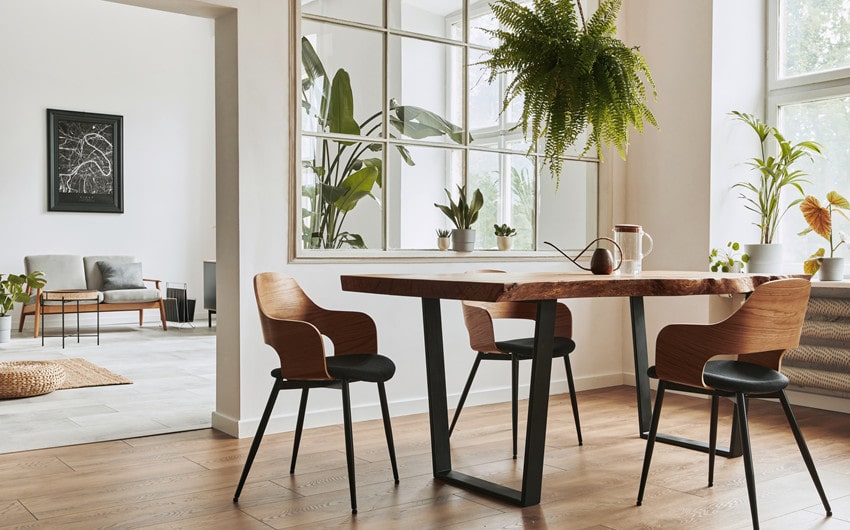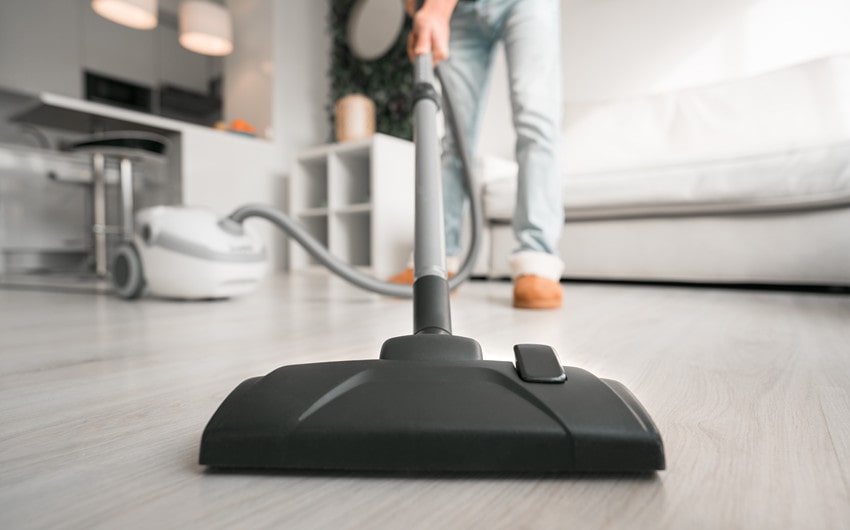Dust invades our homes, settling on every surface and compromising our indoor air quality. Discovering how to keep dust out of your room isn’t just about cleanliness; it’s about health. In this guide, we explore 11 effective strategies to combat dust, ensuring your living spaces remain pristine and your air fresh.
Understanding Dust: Composition and Sources

Dust is far more complex than it appears, consisting of a myriad of particles that can originate from both indoor and outdoor environments. Indoors, dust comprises human skin cells, hair, pet dander, fabric fibers, and particles from household items. Outdoors, it brings in pollen, soil particles, and pollutants, hitching a ride on clothing, shoes, and pets, infiltrating our homes through open windows and doors.
Microscopic creatures, such as dust mites, thrive in this environment, feeding on the organic matter in dust and contributing to its makeup. Their waste and decomposed bodies become part of the dust composition, potentially triggering allergies and asthma in sensitive individuals.
Understanding the sources and composition of dust is pivotal in addressing its accumulation effectively. By recognizing that dust can come from almost anywhere and is made up of a variety of materials, we can tailor our cleaning and prevention methods to be more effective, targeting not just the dust we see but also the microscopic elements we don’t.
Tips on How to Keep Dust Out of Your Room
Embarking on the quest for a dust-free room can seem daunting, but with the right strategies, it’s entirely achievable. Below, we delve into practical and effective tips that will transform your living space into a haven of cleanliness, minimizing dust and enhancing your overall well-being.
1. Dust Regularly with the Right Tools

Effective dusting is essential in minimizing dust accumulation in your room. Opt for high-quality microfiber cloths, which are specially designed to attract and trap dust particles through static electricity, rather than feather dusters that can just spread dust around.
When dusting, start from the top of a room and work your way down, ensuring you cover high surfaces like ceiling fans, top edges of furniture, and window ledges before moving to lower surfaces. This method ensures any dislodged dust particles that fall can be cleaned up in the lower cleaning stages.
For electronic devices and intricate objects, use compressed air cans to blow dust out of tight spaces and microfiber cloths to gently wipe surfaces without scratching. Regular dusting, at least once a week, can significantly reduce the buildup of dust and should be integrated into your routine cleaning schedule.
2. Vacuum with a HEPA Filter
Vacuuming is not just about removing visible debris and dirt; it’s about ensuring that fine dust particles are efficiently captured and not released back into the air. A vacuum cleaner equipped with a High-Efficiency Particulate Air (HEPA) filter is designed to trap particles as small as 0.3 microns with a 99.97% efficiency, which includes most allergens and fine dust.
It’s important to vacuum not only the floors but also other areas where dust accumulates, such as under furniture, along baseboards, and on upholstered furniture. For homes with pets, consider vacuuming more frequently to manage pet hair and dander.
After vacuuming, it’s crucial to properly maintain your vacuum cleaner by regularly emptying the canister or changing the bag and cleaning or replacing the HEPA filter as recommended by the manufacturer to ensure its efficiency.
3. Mop Floors After Vacuuming
Even the most thorough vacuuming may leave behind some dust, especially on hard flooring surfaces. Following up with a damp mop can capture this residual dust, leaving your floors truly clean. Use a microfiber mop or cloth as it’s gentle on surfaces and effective at trapping dust.
When mopping, avoid using excessive water, especially on wood and laminate floors, as this can cause damage. Instead, use a lightly dampened mop and a suitable cleaning solution for your floor type. This step not only removes the remaining dust but also any allergens or microorganisms that vacuuming may have missed.
4. Use Door Mats and Rugs

Entranceways are major conduits for dust entering the home. Strategically placed door mats and rugs can significantly reduce the amount of dust and dirt brought in on shoes. Opt for high-quality mats with a rough texture to effectively scrape off soil and moisture from footwear.
Consider having a two-mat system: one rugged mat outside for initial dirt removal and a softer one inside to catch finer particles. Encouraging household members and guests to remove their shoes upon entry can further minimize the introduction of dust from outdoors.
Regularly clean these mats and rugs by shaking them out, vacuuming, and washing as needed to maintain their effectiveness.
5. Seal Windows and Doors
Unsealed windows and doors are not just energy inefficiencies; they’re also gateways for dust. Inspect the seals around windows and doors for any gaps or damage and replace or repair them as needed. Weather stripping and door sweeps are effective solutions for sealing gaps and preventing dust from entering.
For windows, consider using sealant or caulk to close off any openings where dust might penetrate. In addition to sealing gaps, using high-quality window screens can filter out larger dust particles and pollen from entering when windows are open.
These measures not only contribute to dust reduction but also improve the energy efficiency of your home, making it more comfortable and reducing heating and cooling costs.
6. Invest in an Air Purifier
Air purifiers are crucial in the battle against indoor dust, especially those equipped with HEPA filters capable of capturing particles as small as 0.3 microns. By strategically placing an air purifier in your room or in high-traffic areas of your home, you can significantly reduce the concentration of dust particles in the air.
Some air purifiers also feature activated carbon filters, which are effective in removing odors and volatile organic compounds (VOCs), further purifying your living environment. When selecting an air purifier, consider the size of the room and choose a unit with an appropriate clean air delivery rate (CADR) to ensure efficient operation.
Regular maintenance, such as replacing or cleaning the filters as recommended by the manufacturer, is essential to maintain the efficiency and effectiveness of your air purifier.
7. Control Indoor Humidity
Dust mites, a common component of household dust, thrive in environments with high humidity. Maintaining indoor humidity levels between 40-50% can inhibit their growth and reduce dust mite populations.
Use a hygrometer to monitor humidity levels and employ dehumidifiers or air conditioners to reduce moisture in the air, particularly during humid months or in naturally damp areas of your home, such as basements. Ventilating your home by opening windows during drier days and using exhaust fans in kitchens and bathrooms during and after cooking or showering can also help manage humidity levels.
8. Wash Fabrics Regularly
Fabrics such as bedding, curtains, and upholstery can trap and hold dust, making them significant contributors to indoor dust levels. Washing these items regularly in hot water, where applicable, can kill dust mites and remove accumulated dust and allergens.
For items that cannot be washed in hot water, consider using dust mite-proof covers, especially for mattresses, pillows, and box springs. Additionally, vacuuming upholstery and using a steam cleaner can help remove dust from fabrics that cannot be easily laundered.
9. Choose Dust-Resistant Furnishings

When furnishing your room, opt for materials and surfaces that are less likely to attract and retain dust. Smooth, hard surfaces such as leather, metal, or polished wood are easier to clean and less conducive to dust accumulation than textured materials like velvet or shag carpets.
Minimalist designs with fewer crevices and decorations can also reduce the number of places for dust to settle. When choosing window treatments, consider washable curtains or blinds that can be easily cleaned, as they accumulate less dust than heavy, textured drapes.
10. Declutter to Reduce Dust
A cluttered space provides more surfaces for dust to accumulate and makes cleaning more challenging. Regularly decluttering your room by removing unnecessary items can significantly reduce dust buildup.
Adopt a minimalist approach by keeping only what you need and use frequently, and store small items in closed containers or drawers to prevent dust from settling on them. This not only makes cleaning more straightforward but also creates a more peaceful and aesthetically pleasing living environment.
11. Opt for Closed Storage
Open shelves and storage units can quickly become dust collectors. Incorporating closed storage solutions, such as cabinets with doors and drawers, can significantly reduce the amount of dust settling on stored items. This approach keeps your belongings clean and dust-free while contributing to a tidier and more organized space.
Regularly wiping down the exterior of these storage units and occasionally cleaning the interiors can further prevent dust accumulation and ensure a cleaner living environment.
Implementing these tips consistently can significantly reduce the amount of dust in your room, leading to cleaner surfaces, fresher air, and a healthier living environment.
Conclusion
By incorporating these 11 tips into your cleaning routine, you can significantly reduce dust accumulation in your room, leading to a healthier and more pleasant living environment. Regular maintenance and smart choices in home furnishings and organization can make a big difference in your fight against dust.







